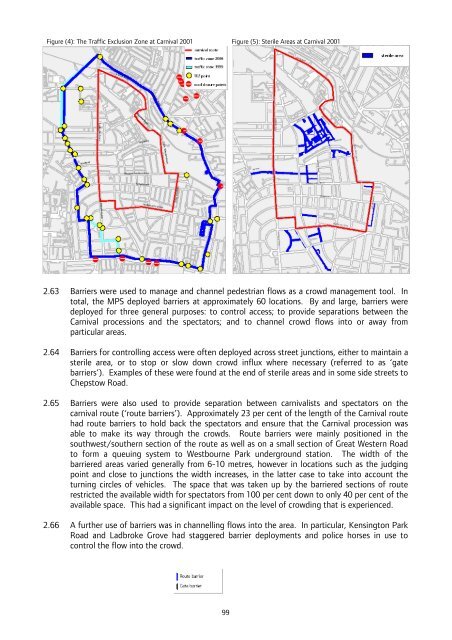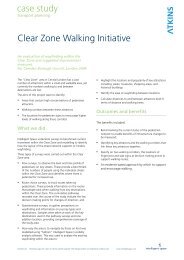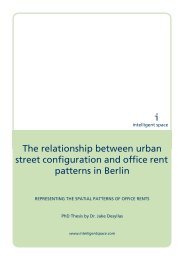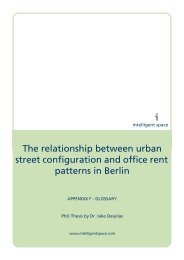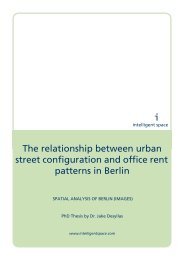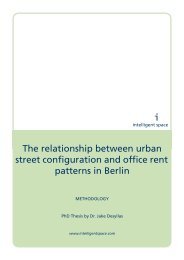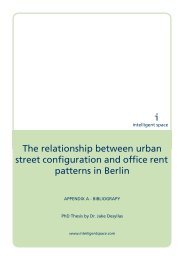Notting Hill Carnival Strategic Review - Intelligent Space
Notting Hill Carnival Strategic Review - Intelligent Space
Notting Hill Carnival Strategic Review - Intelligent Space
Create successful ePaper yourself
Turn your PDF publications into a flip-book with our unique Google optimized e-Paper software.
Figure (4): The Traffic Exclusion Zone at <strong>Carnival</strong> 2001 Figure (5): Sterile Areas at <strong>Carnival</strong> 2001<br />
2.63 Barriers were used to manage and channel pedestrian flows as a crowd management tool. In<br />
total, the MPS deployed barriers at approximately 60 locations. By and large, barriers were<br />
deployed for three general purposes: to control access; to provide separations between the<br />
<strong>Carnival</strong> processions and the spectators; and to channel crowd flows into or away from<br />
particular areas.<br />
2.64 Barriers for controlling access were often deployed across street junctions, either to maintain a<br />
sterile area, or to stop or slow down crowd influx where necessary (referred to as ‘gate<br />
barriers’). Examples of these were found at the end of sterile areas and in some side streets to<br />
Chepstow Road.<br />
2.65 Barriers were also used to provide separation between carnivalists and spectators on the<br />
carnival route (‘route barriers’). Approximately 23 per cent of the length of the <strong>Carnival</strong> route<br />
had route barriers to hold back the spectators and ensure that the <strong>Carnival</strong> procession was<br />
able to make its way through the crowds. Route barriers were mainly positioned in the<br />
southwest/southern section of the route as well as on a small section of Great Western Road<br />
to form a queuing system to Westbourne Park underground station. The width of the<br />
barriered areas varied generally from 6-10 metres, however in locations such as the judging<br />
point and close to junctions the width increases, in the latter case to take into account the<br />
turning circles of vehicles. The space that was taken up by the barriered sections of route<br />
restricted the available width for spectators from 100 per cent down to only 40 per cent of the<br />
available space. This had a significant impact on the level of crowding that is experienced.<br />
2.66 A further use of barriers was in channelling flows into the area. In particular, Kensington Park<br />
Road and Ladbroke Grove had staggered barrier deployments and police horses in use to<br />
control the flow into the crowd.<br />
99


